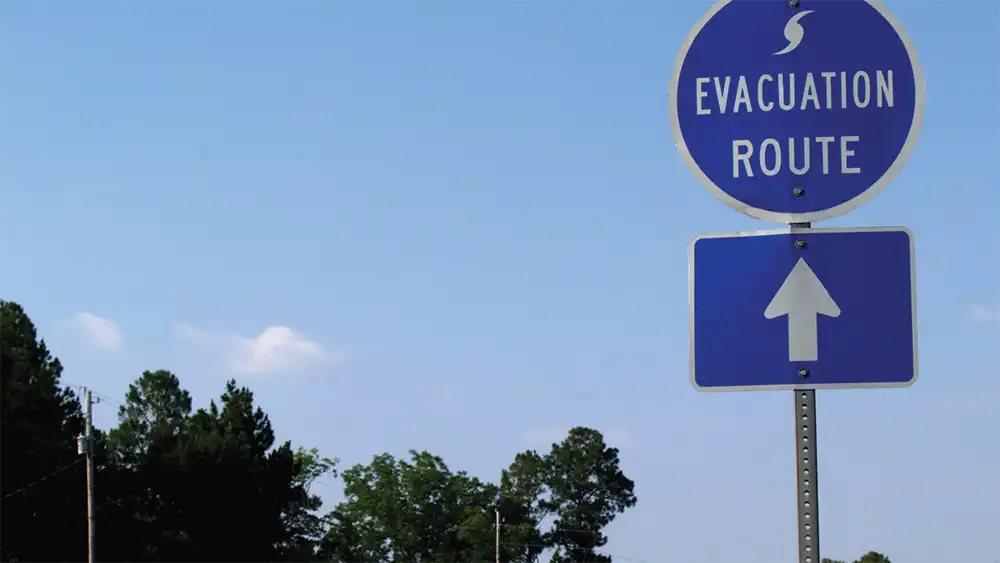
Preparing for hurricane weather is a normal yearly occurrence for longtime Mount Pleasant residents. But if you are new to the area or have never experienced what hurricanes can do to homes and places along the coast, now is the time to get ready in case the worst happens this fall – and it very well could.
“The Charleston and Mount Pleasant areas are in a zone that averages 50-69 hurricane storms every 100 years,” said John Cangialosi, senior hurricane specialist with the National Hurricane Center in Miami. “And since the height of tropical storms and hurricanes for this area is in September, it’s a good idea to prepare now.”
Shannon Whitehead, emergency management & resilience officer for the Town of Mount Pleasant, added that adhering to recommended safety guidelines can substantially lessen the impact of hurricanes.
“By taking steps such as installing hurricane shutters, reinforcing roofs and clearing yards of debris, homeowners can significantly reduce the risk of property damage,” Whitehead said. “And in the event of an evacuation order, allow yourself plenty of time to evacuate.”
To this end, forecasters with the National Oceanic and Atmospheric Administration (NOAA), headquartered in Washington, D.C., advise these steps, a complete list of which can be found at noaa.gov/hurricane-prep:
Risk from Wind and Water
- Know if you live in an area prone to storm surge flooding.
- Make sure your home is hurricane proof with storm shutters.
- Get an insurance checkup and document your possessions.
Develop an Evacuation Plan
- Plan several routes.
- If you don’t have a vehicle, check with local officials to see what transportation options are available.
Assemble Disaster Supplies
- If sheltering-in-place, have enough non-perishable food, water and medicine to last each person in your family a minimum of three days.
- Keep a battery-powered radio and flashlights on hand, as electricity could be out for weeks.
Rely on and Understand Forecast Information
- Stay up to date from the National Hurricane Center and your local National Weather Service office.
- Know your alerts and the difference between a watch and a warning.
Get moving When a Storm Threatens
- Cover windows, and secure doors and loose items.
- Have medical supplies, charge your phone, pack bags and have your vehicle ready to go.
Other NOAA advice includes staying protected during storms and using caution after storms, such as returning home only when directed.
“One recurring issue I have observed is the tendency of individuals to disregard evacuation warnings, which can lead to dangerous situations such as being stranded on roads or having to seek shelter at home during the storm,” said Whitehead.
Cangialosi added that in the past several years, more people have died in the preparation and recovery stage than in the storm itself.
“Electrocutions, vehicle accidents, carbon monoxide poisoning and falls have unfortunately been too common before and after these events,” Cangialosi said.
The U.S. Census Bureau estimates that 44.4 million people live in the Atlantic coastline region. This area comprises 14 states, more than 160 counties – making it the most populous of all the nation’s coastline regions.
Cangialosi said that while some fatalities are inevitable, most needless deaths occur because “people either didn’t prepare or they ignored the warnings.”
“Using your own common sense will also best serve all preparations,” Cangialosi said, “especially if you find yourself in a spot you didn’t plan for.”
Such was the case with Ian Moore, a former College of Charleston student, who was in Charleston during the fall of 2016 when Hurricane Matthew hit.
Heavy rains from the storm flooded Moore out of the home where he was staying and with his chance of evacuating unexpectedly compromised, he was forced to shelter-in-place – but he wasn’t sure where he would be safe.
Acting on advice from his dad Harold, who lives in Greenville, Moore took refuge in a downtown Charleston parking garage next to his car, which was parked on an upper level, well above the potential flooding zone. Moore camped out in a tent for three days until the storm cleared.
“Doing so made the experience more of a memory rather than an ordeal,” Moore said. “And while I wouldn’t want to be trapped in hurricane weather again, I was able to utilize a public place right in Charleston until the storm’s flood waters subsided.”
Since 2000, South Carolina has been hit or affected by 22 hurricanes. And whether you are skilled or unskilled in handling hurricanes, both Cangialosi and Whitehead emphasized that there is no such thing as being too ready.
“Much of the damage caused by hurricanes in Mount Pleasant can be mitigated or minimized through proactive planning and preparation,” Whitehead said. “Creating a comprehensive emergency plan that includes evacuation routes, essential contact numbers and a three-day emergency go bag for each household member ensures that families are prepared and can stay safe.”
By L. C. Leach III

Leave a Reply